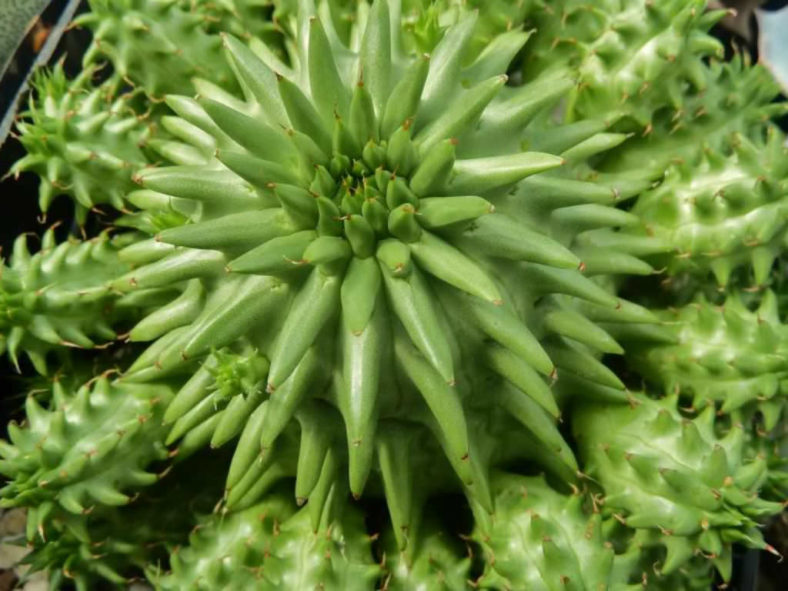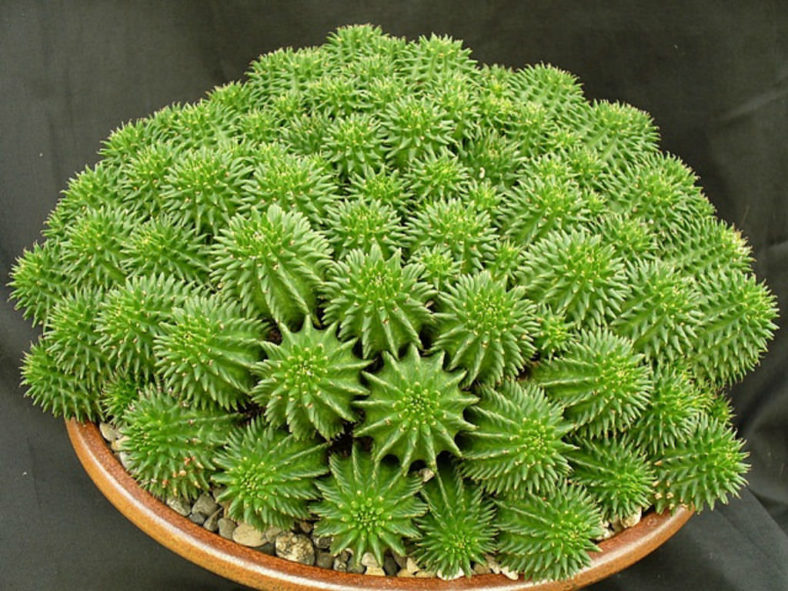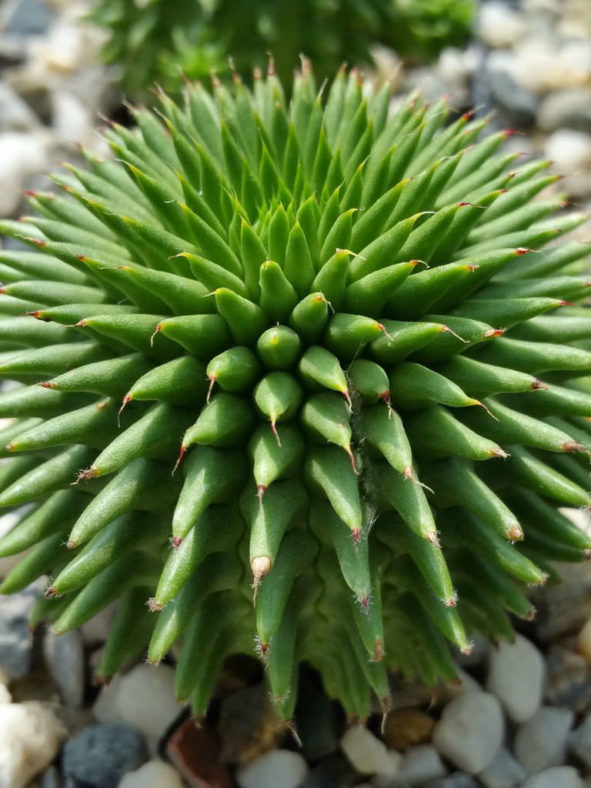Scientific Name
Euphorbia susannae Marloth
Common Name(s)
Suzanne's Spurge
Synonym(s)
Euphorbia suzannae
Scientific Classification
Family: Euphorbiaceae
Subfamily: Euphorbioideae
Tribe: Euphorbieae
Subtribe: Euphorbiinae
Genus: Euphorbia
Etymology
The specific epithet "susannae" (pronounced "soo-SAN-ay-ee") honors Susanna Muir, wife of John Muir (1874-1947), a Scottish-born South African medical doctor, naturalist, and cultural historian, who discovered this species in 1925. According to some authors, the species name should be Euphorbia suzannae because Mrs. Muir's first name was actually spelled Suzanna.
Origin
Euphorbia susannae is native to South Africa. It grows in karroid scrub on gentle slopes, often in quartz patches east of Barrydale to Muiskraal in the Western Cape province.
Description
Euphorbia susannae is a small, clump-forming succulent with chubby stems that have 12 to 16 ribs lined with conical tubercles, each tapering to a thread-like point. It forms a tight clump that can reach up to 4 inches (10 cm) in height and 12 inches (30 cm) in diameter. On older stems, the points are often worn off so that the tubercles are rounded at the tip. The stems are green, becoming brownish in intense light.
The cyathia are held atop short stalks that emerge between the tubercles. Each cyathium consists of a cup with five lobes around the outside and tiny flowers in the middle. They appear in the fall or the spring. The small, round seed capsules that follow are purplish-red in color.

Hybrids of Euphorbia susannae
How to Grow and Care for Euphorbia susannae
Hardiness: USDA hardiness zones 9b to 11b: from 25°F (-3.9°C) to 50°F (10°C).
Euphorbias are very easy to care for. These plants require a little pampering to become established, but once they are, they are self-sufficient. More die from overcare and watering than from neglect. Euphorbias need well-draining soil and ample sunlight. They are not particular about soil pH, but cannot tolerate wet soil. Unlike most succulents, Euphorbia does not handle long periods of drought well. It may need weekly watering during the summer. Water whenever the top several inches of the soil dry. Water deeply, but avoid letting them sit in wet soil, as this can cause root rot. Add some organic matter or fertilizer to the planting hole. Feed with a half-strength fertilizer monthly if you are growing them in containers or your soil is poor.
These succulents can be grown from seed, but they can be difficult to germinate (or even find). They are usually propagated by cuttings. This can be tricky because of the exuding sap. Rooting hormone is recommended with Euphorbia. They tend to grow problem-free, but there are a few pests and diseases to be alert for.
Learn more in "How to Grow and Care for Euphorbia."
Links
- Back to genus Euphorbia
- Succupedia: Browse succulents by Scientific Name, Common Name, Genus, Family, USDA Hardiness Zone, Origin, or cacti by Genus
Photo Gallery
Click on a photo to see a larger version.


